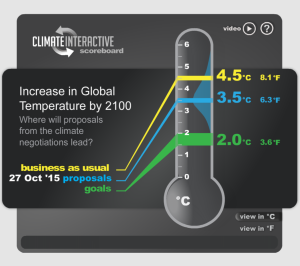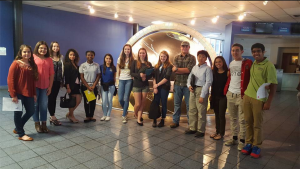COP21: A Good Start, But Not Enough
Will The World Go Far Enough To Solve Global Warming in Paris at COP21?
The short answer, I fear, is no and that’s a shame.
Nearly 200 countries from around the world will meet in Paris over the next two weeks to focus on solutions to address the coming catastrophe our planet faces from global warming at the 21st United Nation’s Conference of the Parties (known as COP21) . It is an important meeting and one that has the potential to create the type of goals that our world needs, but I fear the agreements that will come from these meetings will not do enough, soon enough, and that while it will be a good step, it’s only that, a first step towards the serious changes that people must undertake to truly solve the problem.
I am also concerned with the fact that whatever comes out of the Paris meetings will only be goals, and they will be voluntary, not some legal requirement but more like a collective moral one.
“Science is no longer the bottleneck. The challenge is political and social.”
Dr. John Sterman (aka Dr. Doom), MIT Sloan System Dynamics professor
I worry about how those goals will be implemented or if they will ever be implemented. In my own work, with my own eyes, I see progress being made, more people becoming involved and concerned, but the politics of global warming and sea level rise still stand in the way. For the goals that will come out of Paris, and the more aggressive ones that we will need as a next step if we are going to seriously make a dent is sea level rise, people all over the world will need to demand changes in fossil fuel production and consumption, massive growth in renewable energy such as solar and end our or planets deforestation.
Scientists agree that in order to avoid disaster beyond the damage man has already caused by dramatically increasing carbon in our atmosphere since the time of the Industrial Revolution will require that mankind not allow temperatures to increase more than 2 degrees Celsius. One of my concerns with COP21 and the politics behind it is that the assembled nations will likely agree to a target of 3.5 degrees, far more than is acceptable if we are ever to seriously do something.
MIT’s Climate Interactive (www.climateinteractive.org) has created a simple infographic that shows where we are headed if we do nothing (that’s the yellow line at 4.5 degrees), what COP21 participating nations will likely agree to voluntarily set their goal achieve (that’s the blue line at 3.5 degrees), and what’s actually needed in most experts opinions (that’s the green line at 2 degrees). Here is a simple way to understand the various milestones:

The good news is that people all over the world will be talking about climate change and that’s helpful to getting more folks involved. The more people become involved (please tell everyone you know to become involved) the sooner we can demand that leaders do something to solve the problem.
If the 3.5 degree goal is agreed upon and implemented then that’s a good thing too, it’s a start and obviously a possible improvement over where we’ve been heading.
China, the world’s largest producer of CO2, is expected to set goals to cap its carbon emissions and emphasize green energy solutions for its power grid.
Brazil will announce that it will become the first major developed country on the planet that will reduce its net greenhouse gas emissions (Brazil, by the way, has one of the world’s strongest commitments to using solar power… something Florida and the United States needs to dramatically improve upon).
And at a time when we not only need new leadership and laws to solve this problem we need ‘Uber’ or smart phone like new solutions, new inventions, that will provide new technology to replace fossil fuels. That’s why someone so innovative as Microsoft founder, Bill Gates, announcing that he will establish a multi-billion dollar research program to find new climate change technologies is an important part of COP21.
As with all things sea level rise and global warming, much work remains to break-through the politics and special interest that stand in the way to truly solving the problem and something tells me that those challenges will continue over my entire lifetime.
United Nation’s World Climate Project Workshop
Speaking of COP21, I want to share that I am honored to participate in the U.N.’s World Climate Project workshop that is being hosted by the Patricia and Phillip Frost Museum of Science on December 5th. Dream in Green, for which I serve as one of their “Dream in Green ambassadors,” has selected 14 students from seven schools in Miami-Dade County to participate as climate advisors to students from Breakthrough Miami and Frost Science’s Upward Bound program. The event is being conducted in concert with the COP21 United Nations climate negotiation taking place in Paris and aims to give students the opportunity to work in teams, represent countries around the world, and learn how to negotiate climate agreements that will stabilize global temperatures. The project is an initiative by the White House to provide resources to organizations to help people engage in thought-provoking, mock-UN events that simulate the United Nations climate talks.
The program involves 180 middle and high school students participating in Upward Bound and Breakthrough Miami’s programs that will participate in the negotiations. Students will get to experience what it feels like to negotiate a climate agreement with the goal of keeping global temperatures from increasing 2 degrees celsius. Through meeting with real climate scientists and consulting with their climate advisors, the students will gain the ability to discuss environmental issues, as well as learn more about the topic and how it is effecting the world that they live in.
